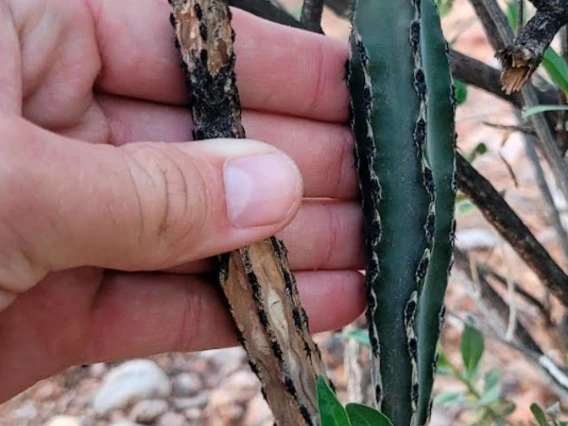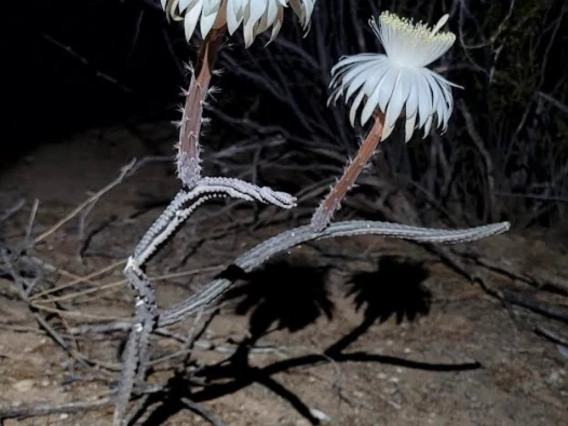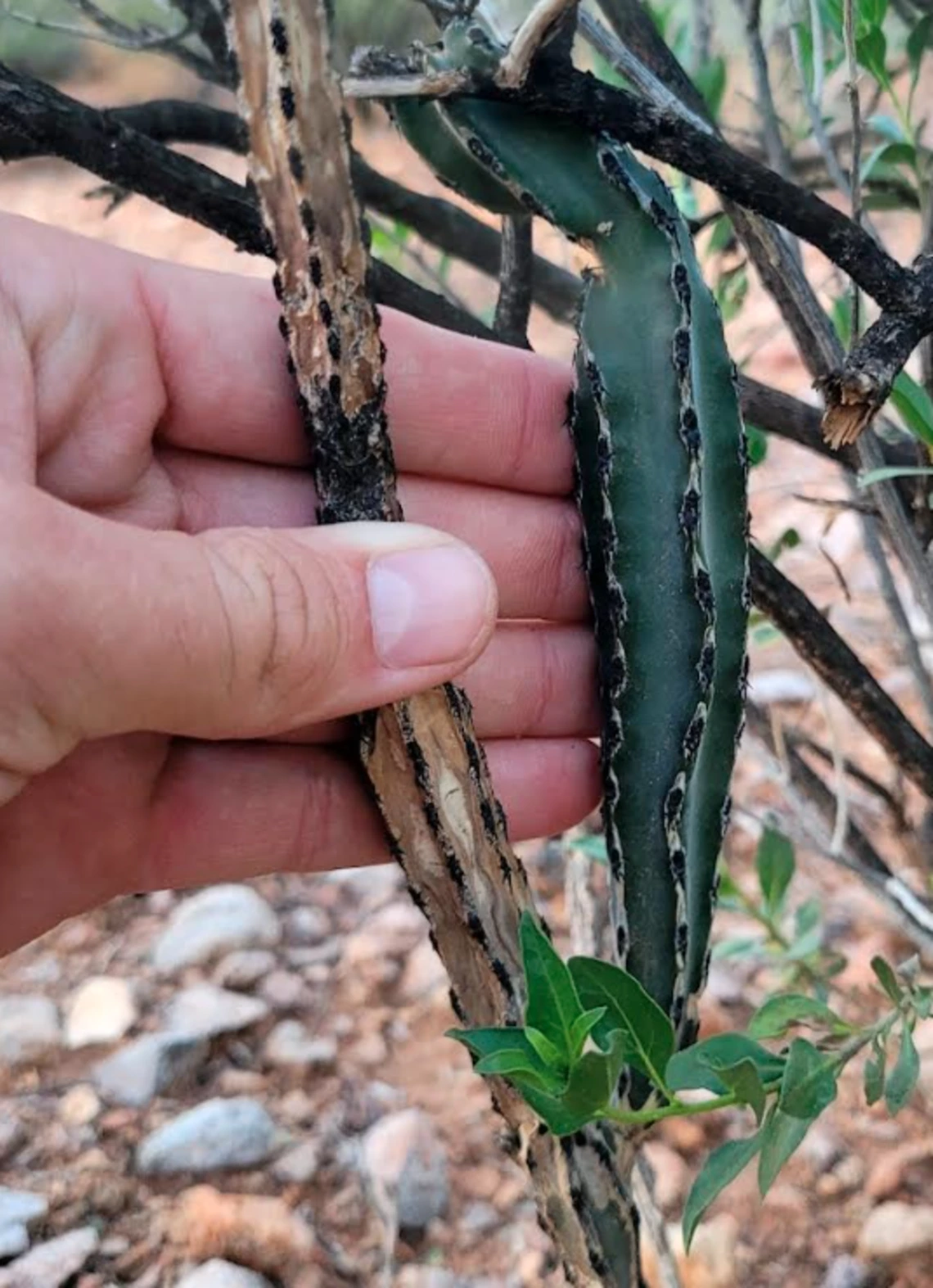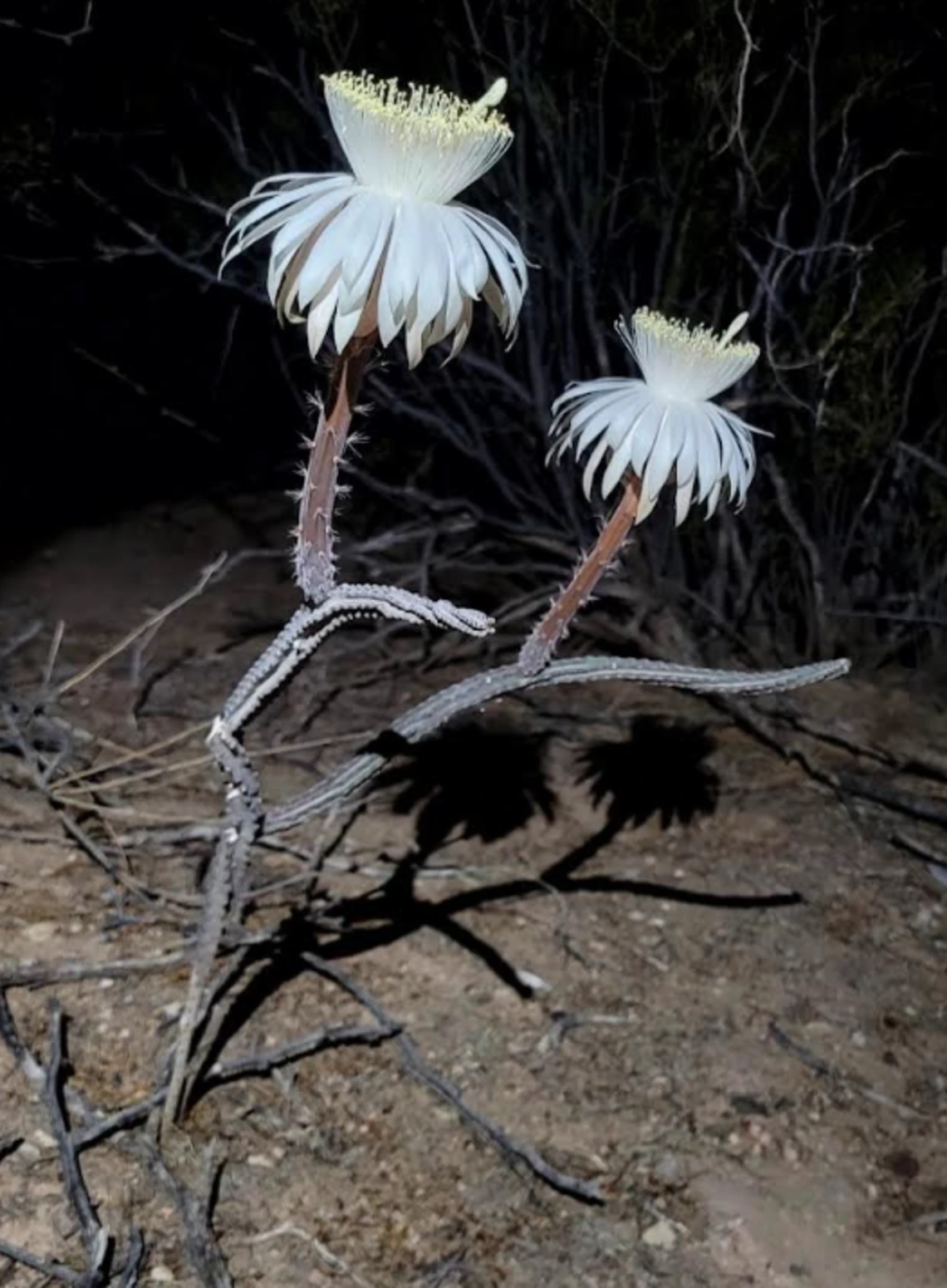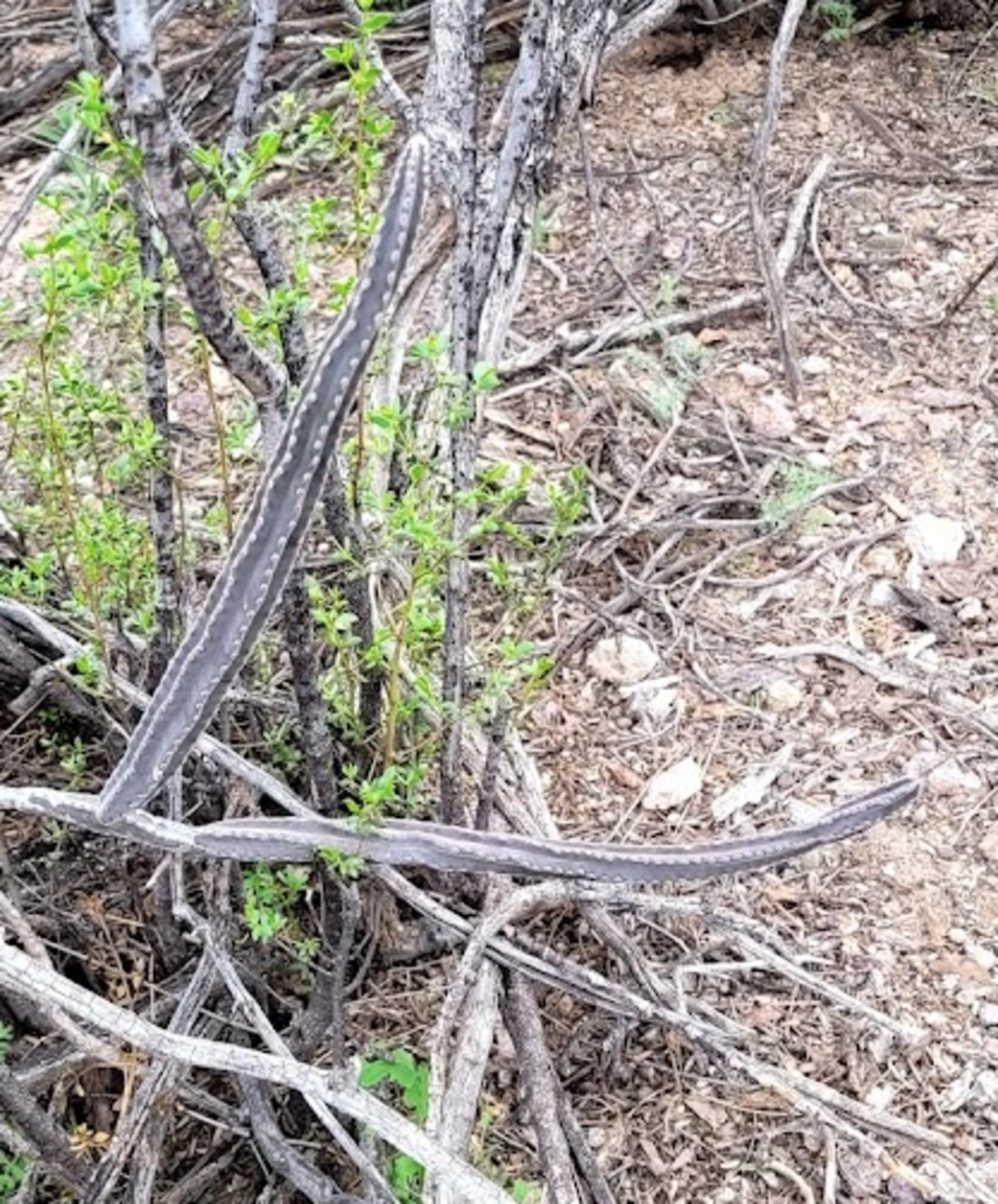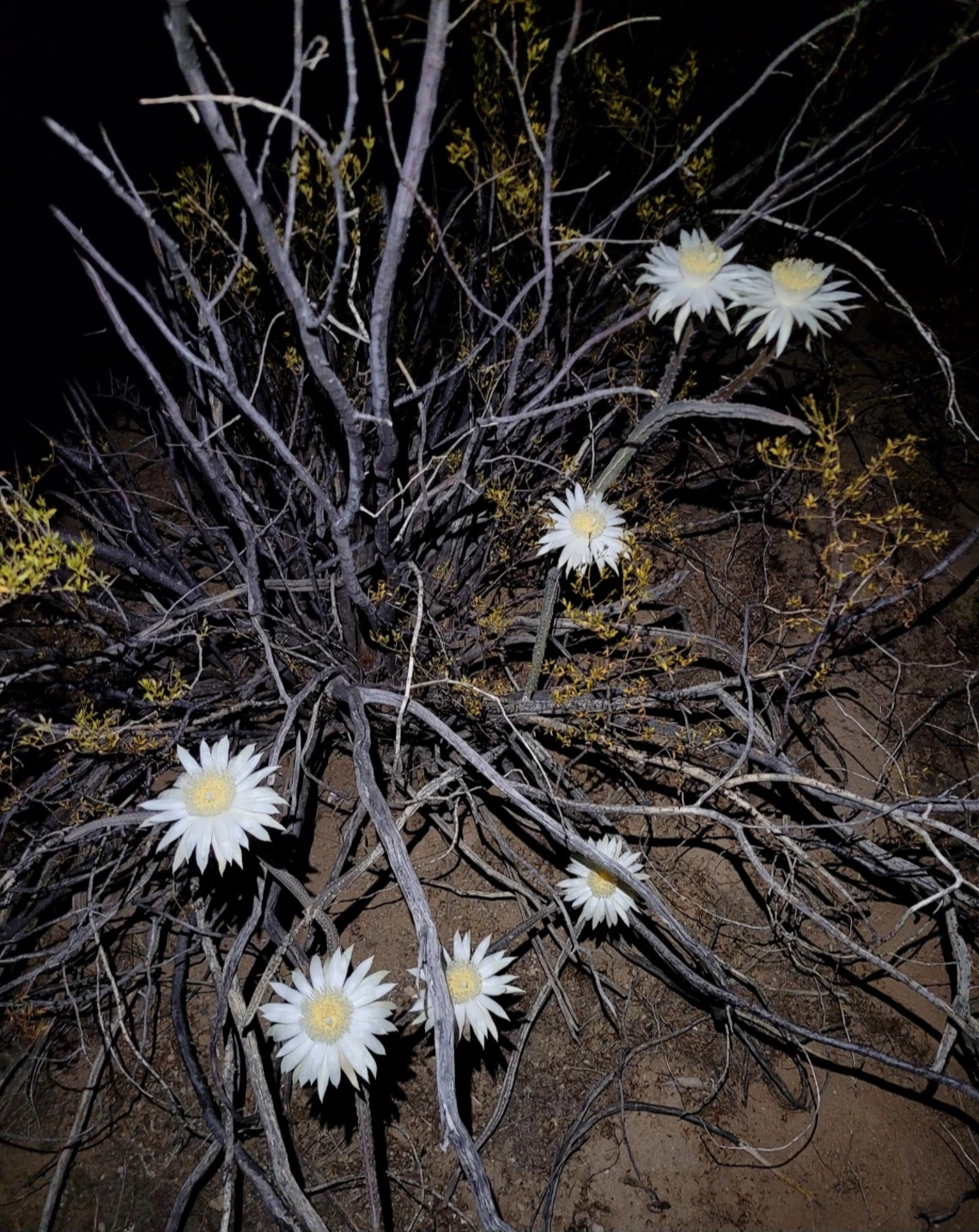Family: Cactaceae
Compound: Pen gre
Synonyms: Cereus greggii
Geographic Origin: southwestern US, north-central MX
Characteristics: An inconspicuous, sprawling cactus with 1 or more slender stems often resembling dead branches due to their typically pale green or purple-brown color. The stems are typically 1.3-2.5m (0.5-1in) in diameter and have between 4 and 6 ribs. Ribs are lined with slightly raised areoles featuring 10-15, very short, inoffensive spines. Older stems become woody and strongly resemble a dead branch. A large, tuberous, usually beet shaped root is hidden below the soil. This root allows the cactus to survive herbivory even when the entire above ground portion of the plant is eaten or destroyed. Flowers are showy and white, 16-20cm (6-8in) long and 7.6cm (3in) in diameter. Individual flowers only open one night of the year and develop into a 2.5-5cm (1-2in) globular to teardrop shaped fruit with vibrant red skin and prominent spine tipped areoles.
Natural History: Typically found beneath trees and shrubs, growing throughout the branches of the nurse plant, using them for shelter and support. Prefers sandy to gravely soil between 304-1066m (1,000-3,500ft), often near desert washes, bajadas, and slopes between. These cacti can be extremely difficult to see for most of the year, except when their large, white flowers and vibrant red fruit are present. Flowers are not self-fertile, and multiple plants are required for pollination, which is performed by moths.
Cultivation Notes: Often propagated from seed or stem cuttings. When growing in containers, large, deep pots are necessary to accommodate the underground tuber. A large, deep pot should be used for a mature plant. A standard 15 gallon is recommended. Potted plants should be placed in partial shade and may benefit from some form of support to allow arms to grow upwards. When planting in the ground, a well draining area beneath a tree or shrub is preferred.
For general cactus and succulent propagation information, click here
Ethnobotany: Fruit, flowers, roots and stems were eaten. Root used medicinally to stimulate the heart, to treat sores, and diabetes. Valued in cultivation for its stunning flowers, and interesting growth form.
Citations:
Arizona-Sonora Desert Museum.
New Mexico Rare Plants List.
University of Arizona Krutch Garden Tour Booklet page 4
Urban Landscape Committee. Desert Accent Plants. Arizona Native Plant Society, 1992.
SEINet Arizona – New Mexico Chapter. Retrieved June 22, 2024.


